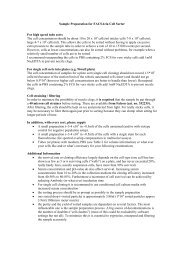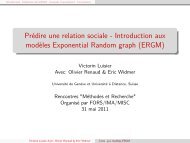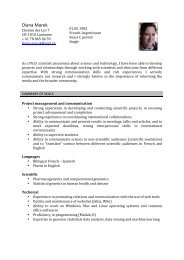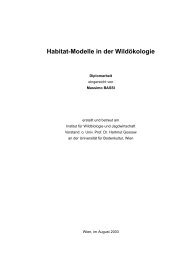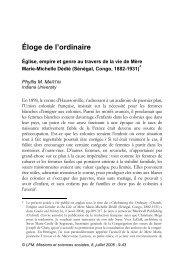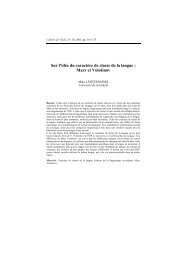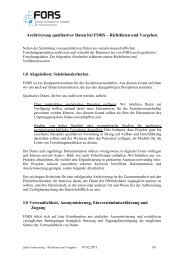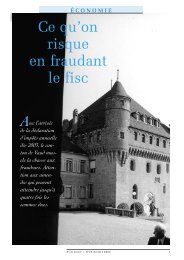conference programme book - European Survey Research ...
conference programme book - European Survey Research ...
conference programme book - European Survey Research ...
You also want an ePaper? Increase the reach of your titles
YUMPU automatically turns print PDFs into web optimized ePapers that Google loves.
118 THURSDAY 21 JULYcompare and contrast respondent behaviors and survey data between the two sample sources and to help usassess potenal advantages and disadvantages of replacing online consumer panels for shopping mall visitorsin data collecons aimed at quanfying causal relaonships rather than at developing populaon esmates.The 15-minute survey was conducted in 2006 concurrently with 765 online parcipants and 600 mall parcipants,using the same mode of collecon and the same quesonnaire. Parcipants were randomly assignedto view different food labels and to answer quesons about the label and the food they viewed...3.1.4 Large Companies, Mulple <strong>Survey</strong>s: The Promise and Challenge of Web (<strong>Survey</strong>) 2.0A. Tule 11 US Census Bureau, United StatesLarge companies tend to receive mulple different surveys, since they comprise a greater proporon of economicacvity in their respecve sectors or industries. The U.S. Census Bureau is conducng a series of meetingswith respondents at large companies to beer understand their survey response processes, with the aimof developing tools to assist them and reduce the burden of parcipang in mulple surveys. One conceptualtool which has been well-received is a secure online ”Company Portal,” which would provide a nexus for centralizedsurvey management by corporate-level respondents, leng them review the surveys they will receivein a given year for planning purposes, update contact and mailing informaon, and monitor survey compleonstatus to ensure mely responses from informants distributed throughout their companies...3.2 Exploring innovave methods for nonresponse bias assessment and adjustmentusing paradataTo be held on July 21, 2011 from: 09:00 to 10:30, in room 315.Coordinated by:• Hideko Matsuo - Katholieke Universiteit Leuven, Belgium• Jaak Billiet - Katholieke Universiteit Leuven, Belgium3.2.1 Using Neighborhood Characteriscs to Predict Nonresponse: Results from a Naonal Mail <strong>Survey</strong> ofYoung AdultsL. Viera Jr. 1 , S. Turner 2 , S. Marsh 1 , R. Medway 31 Fors Marsh Group, United States; 2 Fors Marsh Group LLC, United States; 3 Joint Program in <strong>Survey</strong> Methodology,University of Maryland, United States<strong>Research</strong>ers in the industry are quickly coming to the realizaon that nonresponse bias in esmates is onlyindirectly related to nonresponse rates. The general statement that ”the lower your response rate, the morevulnerable your study is to nonresponse bias” has been proven a gross oversimplificaon. Because even veryhigh response rates have the potenal for very high bias on specific esmates within a survey, recent calls formore nonresponse bias studies have been made (Groves, 2006). However, conducng such analyses in manylarge, naonal surveys is oen problemac when limited informaon about nonrespondents is available on thesurvey frame. Therefore, researchers have sought to find new ways of conducng nonresponse bias analysesby appending auxiliary data to their samples...3.2.2 Assessment of propensity score methods on nonresponse bias adjustmentA. Alanya 2 , H. Matsuo 1 , J. Billiet 11 Katholieke Universiteit Leuven, Belgium; 2 Gallup Europe, BelgiumUnder the project of ’Joint <strong>Research</strong> Acvies (JRA2): improving representaveness ofthe samples’, one of the goal of this project is to study non-response bias using fourdifferent approaches for detecon and adjustment of nonresponse bias used in previous



